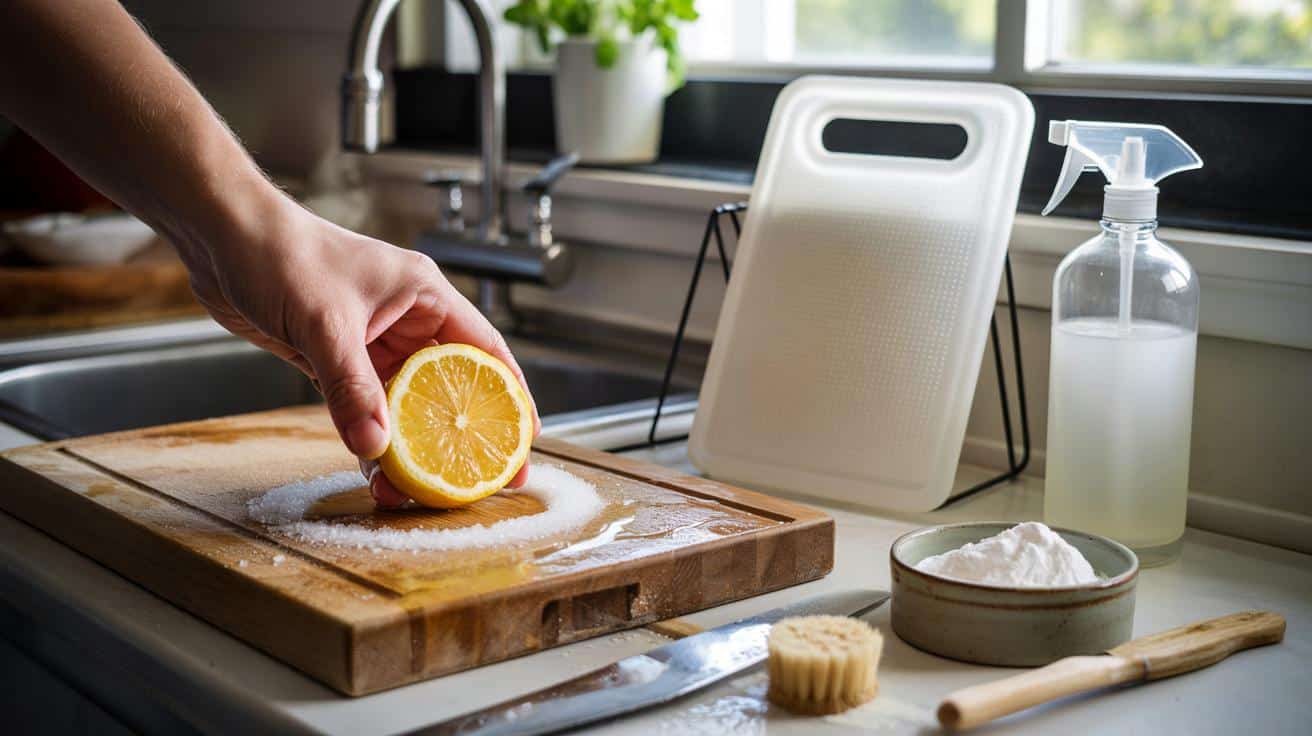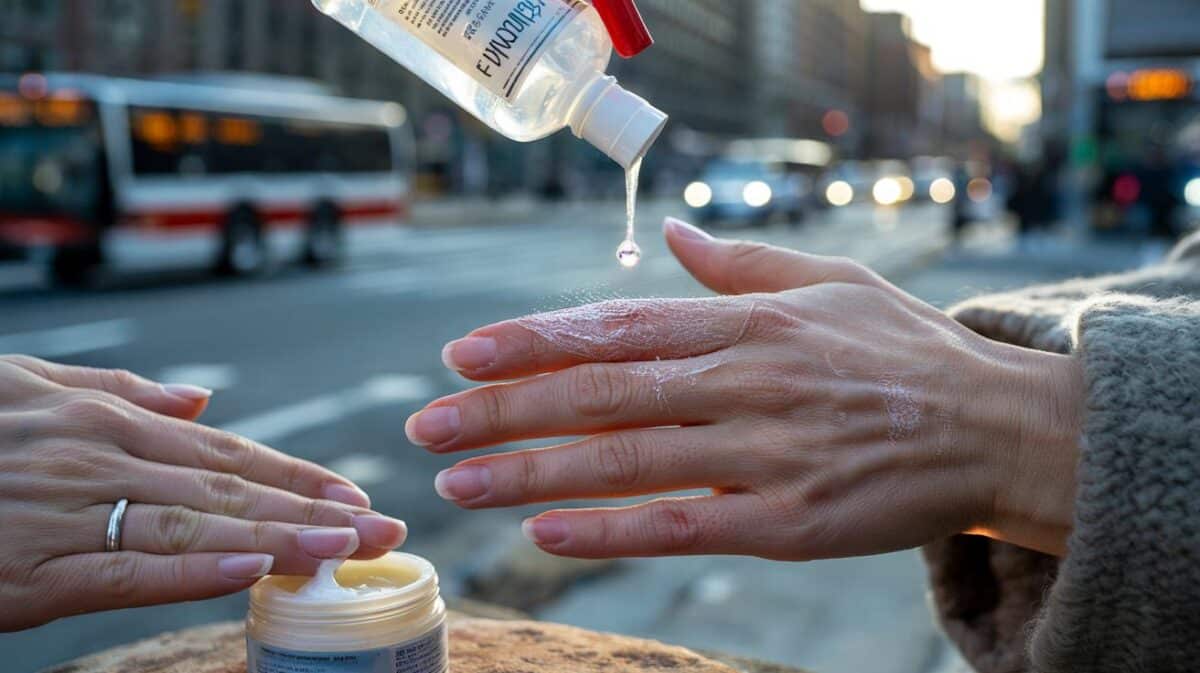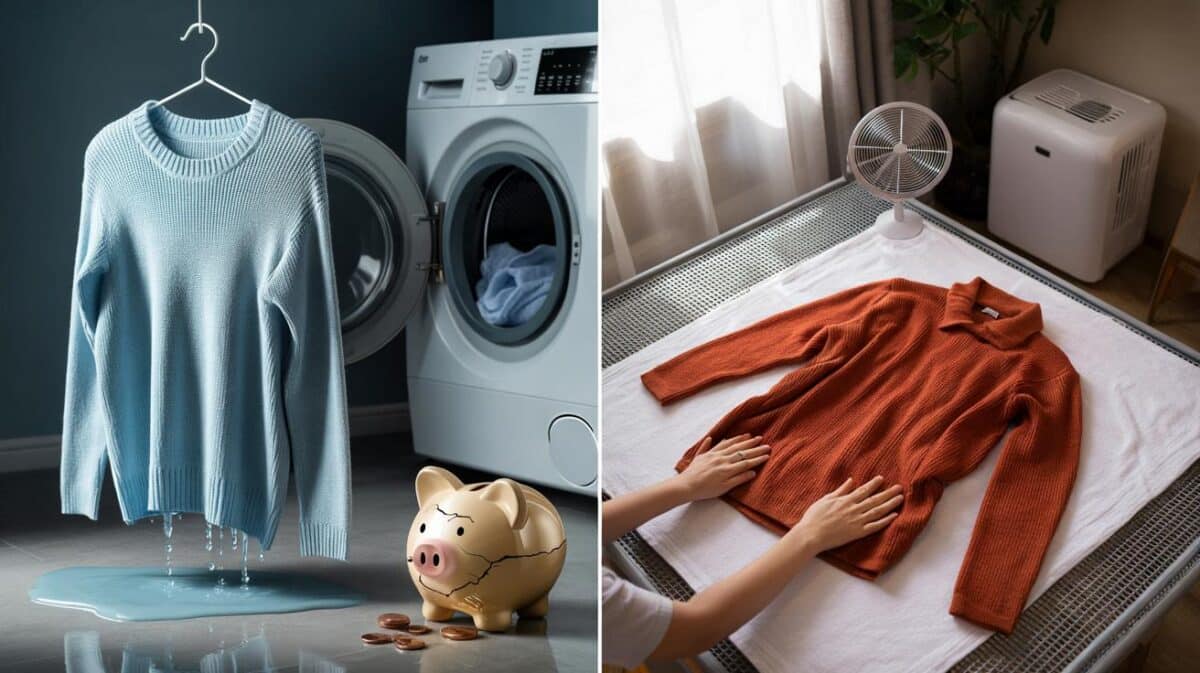Your cutting board does double shifts, and stubborn odours hint at unseen risks.
Many homes scrub with hot water and soap, yet a faint fishy note or onion tang keeps coming back. That smell signals trapped moisture and food residues where microbes thrive. Simple shifts in your routine, using cupboard staples, can push risk down and keep boards fresh without harsh products.
Why your cutting board still smells after washing
Boards collect knife grooves that hold juices and fats. Wood absorbs liquids into its grain, while plastic scars can harbour grime. A quick wipe masks odours but leaves a film that bacteria love. Long soaks warp wood and open deeper cracks. A hot dishwasher cycle helps plastic, yet many home machines run below the heat needed for reliable disinfection, and wood can split or cup.
Odour that lingers after washing points to residues in scratches and pores. If your board smells, it still needs work.
Food safety rules suggest separating raw proteins from ready‑to‑eat foods. A single session slicing chicken then herbs on the same surface moves bacteria where you least want them. The fix starts with smart segregation and finishes with targeted cleaning that reaches into the places smells hide.
The three natural moves that cut odours and knock back germs
These low‑cost steps rely on abrasive action, mild acidity and alkaline lift. Use them singly or in sequence, depending on what touched the board.
Salt and lemon: scrub and refresh
- 1 tablespoon coarse salt spread across the surface
- 1 lemon, halved, used as a hand‑held scrubber
- Contact time: 3–5 minutes before rinsing
Coarse salt scours as the lemon releases acidic juice. The duo loosens fats, lifts surface stains and neutralises pungent smells from onions, garlic and fish. Work with the grain on wood to avoid tearing fibres. Rinse with warm water and dry upright.
Bicarbonate paste: lift deep odours and stains
- 2 tablespoons bicarbonate of soda mixed with a little water to form a paste
- Contact time: 10 minutes, then scrub and rinse
Bicarbonate is mildly alkaline. It binds acidic molecules and helps break grease. Spread a thin layer, let chemistry do its job, then scrub with a soft brush. This is handy after curry, beetroot or oily fish. Do not combine with vinegar at the same time, as they neutralise each other and reduce effectiveness.
5% white vinegar: final pass that hits microbes
- 2 tablespoons 5% white vinegar, undiluted
- Contact time: 5–10 minutes before a clear water rinse
Household white vinegar lowers surface pH, which many bacteria dislike. Mist or wipe the board generously and leave it to sit. Use this as a finishing step after visible debris has gone. Vinegar also helps tame dairy residues and raw meat juices on plastic boards.
| Method | Main action | Best for | Time |
|---|---|---|---|
| Salt + lemon | Abrasive + acidic | Onion, garlic, fish odours; surface grime | 3–5 min |
| Bicarbonate paste | Alkaline deodorising | Deep smells; stained patches | 10 min |
| 5% white vinegar | Acidic knock‑back | After raw proteins; final pass | 5–10 min |
Use only one chemistry at a time: scrub first, then apply either bicarbonate or vinegar, not both together.
Routine that keeps boards safer for families
Separate, clean, dry, then air
- Keep at least two boards: one for raw meat and fish, one for bread, fruit and herbs. Colour‑code if that helps.
- Scrape and rinse immediately after use. Warm water and a drop of washing‑up liquid remove loose debris.
- Pick a method above based on what touched the board. Let it sit for the stated time.
- Rinse well, shake off water and stand the board on its edge to dry in free air.
Never soak wood. Stand it upright and let air do the drying for 12–24 hours before storing flat.
Care that extends lifespan
Wood benefits from conditioning. Once a month, wipe food‑grade mineral oil thinly across both faces and edges, leave for 20 minutes, then buff dry. Oiling slows water uptake and reduces cracking. Avoid olive or nut oils that can oxidise and smell stale. Keep boards away from direct heat, radiators and strong sun, which can warp them.
Plastic versus wood: what to choose and when
Plastic boards suit dishwashers and raw meats. High‑heat cycles around 65–70°C help reduce bacteria on smoother plastic, while harsh heat risks splitting wood. Wood fights back differently: some hardwoods draw moisture away from the surface and dry microbes out, yet deep cuts can shelter residues. Replace plastic boards when they show furrows you cannot clean with a brush. Sand light scratches off wood with fine paper, then oil.
For strong smells after fish, start with lemon and salt, then use vinegar on plastic. For curry stains, bicarbonate paste works well on both materials. If you slice hot roast meats, let them rest first; heat softens many plastics and increases gouging, which then traps juices.
Numbers that matter in your kitchen
- Contact time: give active agents 5–10 minutes; quick wipes remove crumbs, not microbes.
- Vinegar strength: household white vinegar is typically 5% acetic acid. Use it neat for best effect.
- Drying window: aim for 12–24 hours of vertical drying for wood after a deep clean.
- Replacement cue: if a coin edge snags in a groove, that board is due for sanding or retirement.
If it smells after drying, repeat the cycle. Persistent odour often means residues remain below the surface.
Extra tips that reduce risk without extra work
Keep a small brush or scraper by the sink. A 10‑second scrape saves minutes later. Rotate methods through the week: salt and lemon after strongly scented foods, bicarbonate for staining sessions, vinegar before storage. Wipe knives before they move from raw proteins to vegetables. Micro‑droplets on blades transfer more than you think.
Run a quick self‑check once a month. Are boards flat, free from deep cuts and odourless when dry? Is there a dedicated board for raw poultry? A two‑minute audit tightens habits that protect children, older relatives and anyone with a sensitive gut. These small moves cost pennies and give you cleaner flavours, crisper herbs and fewer worries when the kitchen gets busy.








